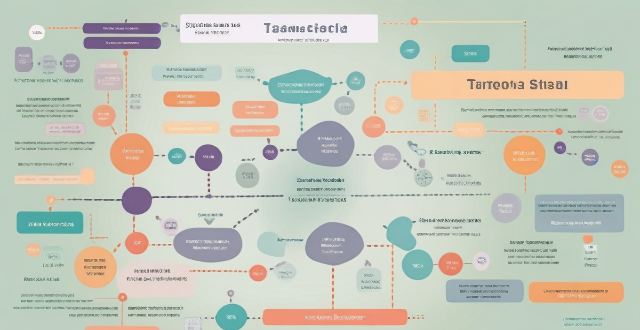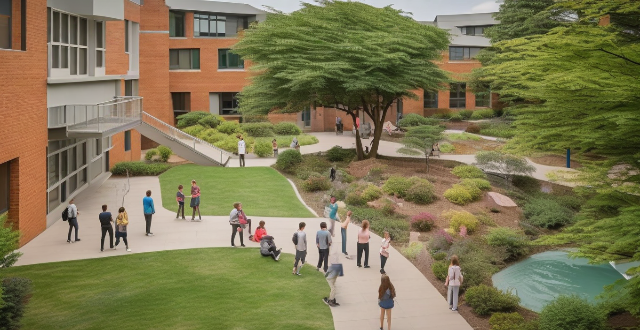Feedback School

How do I evaluate the cultural diversity and inclusion efforts of a school ?
Evaluating the cultural diversity and inclusion efforts of a school involves examining various aspects such as administrative policies, curriculum, student experience, community engagement, and feedback mechanisms. Key factors to consider include the presence of a clear diversity statement in policies, fair hiring and promotion practices, multicultural curriculum, teacher training, diverse student organizations, support services for diverse students, collaboration with local communities, family involvement programs, regular surveys and feedback mechanisms, and continuous improvement plans based on feedback. By assessing these elements, one can gain insight into the effectiveness of a school's efforts to promote cultural diversity and inclusion.

How important is student-teacher ratio in school selection ?
The student-teacher ratio is a crucial factor in school selection, impacting academic performance, personal attention, and classroom management. A lower ratio allows for individual attention, customized learning, and timely feedback, promoting better understanding and improved academic performance. It also creates opportunities for mentorship, emotional support, and social development, contributing to a positive learning environment. Effective classroom management is more feasible with a lower ratio, leading to reduced discipline issues, increased participation, and flexible teaching strategies. Prioritizing schools with favorable ratios can contribute to a successful educational journey.

How to start a new extracurricular club at school ?
Starting a new extracurricular club at school can be an exciting and rewarding experience. It allows you to pursue your interests, meet new people, and develop leadership skills. Here are the steps to follow: 1. Identify your interests and goals for starting the club. What do you want to achieve? Is it to learn a new skill, share your passion with others, or make a difference in your community? Having a clear vision will help you stay motivated and focused throughout the process. 2. Research existing clubs at your school to see if there are any similar groups already in place. This will help you determine if there is a demand for your proposed club and what unique aspects you can bring to it. 3. Gather support from other students who share your interests and goals. Talk to them about your idea and ask if they would be interested in joining. You can also seek advice from teachers or staff members who may have experience starting clubs. 4. Create a proposal that outlines the purpose, goals, and structure of your club. Include details such as meeting times, membership requirements, and potential activities. Make sure your proposal is well-organized and clearly communicates your vision. 5. Submit your proposal to the appropriate person or committee at your school. This may vary depending on your school's policies and procedures. Be prepared to answer questions and provide additional information if needed. 6. Once your proposal is approved, start recruiting members by spreading the word through posters, social media, and word of mouth. Host an interest meeting or event to introduce potential members to your club and its activities. 7. Plan activities and events that align with your club's goals and interests. This could include workshops, guest speakers, service projects, or competitions. Make sure to involve your members in planning and decision-making processes. 8. Promote your club through various channels such as school announcements, newsletters, and social media platforms. Attend school events and showcase what your club does to attract more members and raise awareness. 9. Regularly evaluate your club's progress and adjust accordingly. Solicit feedback from members and stakeholders to improve and ensure that your club continues to meet its goals and objectives.

How can data analytics be used to inform school policy decisions and resource allocation ?
Using data analytics can greatly inform school policy decisions and resource allocation. By analyzing data, schools can identify areas for improvement, personalize learning experiences, evaluate teacher performance, allocate resources effectively, and enhance student support services. This approach leads to improved student outcomes, teaching quality, and resource use.

How can I gauge the level of parental involvement and community support at a school ?
Gauging the level of parental involvement and community support at a school is crucial for parents when choosing an educational institution for their child. This can significantly impact a student's academic performance and overall development. To gauge these factors, parents can observe school events, talk to other parents, and research the school's reputation. When observing school events, parents should attend open houses, sports games/concerts, and volunteer opportunities to assess the turnout and engagement of parents during these events. A high turnout and active participation suggest strong parental involvement and community support. Parents can also connect with other parents through social media groups, PTA meetings, school drop-off/pick-up times, and school events to ask about their experiences regarding parental involvement and community support at the school. Asking about their level of involvement, supportiveness of the school, communication channels, and impact on student performance can provide valuable insights. Researching the school's reputation online through reviews, rankings, news articles, social media, forums, and message boards can also help gauge parental involvement and community support. Analyzing historical data such as enrollment trends, fundraising results, alumni success rates, and school surveys/feedback can further indicate the level of these factors over time. In conclusion, gauging the level of parental involvement and community support at a school involves attending school events, talking to other parents, and researching the school's reputation. By doing so, parents can make informed decisions about choosing the right school for their child that fosters a supportive and engaging environment conducive to academic success and overall development.

What role does audience feedback play in shaping future live streaming sessions ?
The article explores the crucial role of audience feedback in shaping future live streaming sessions. It discusses the importance of feedback in improving content relevance, enhancing interactivity, technical optimization, and building a community. The article also suggests strategies for implementing feedback collection, such as surveys, live chat analysis, social media engagement, and email subscriptions. Additionally, it emphasizes the need for data-driven decisions, transparency with changes, and an iterative approach to continuously improve live streaming sessions.

What kind of customer feedback has been received so far for the new product ?
The new product has received mostly positive feedback, withThe new product has received mostly positive feedback, with user-friendly interface, speed However, there have been concerns about compatibility issues, software bugs, and pricing. Some customers also mentioned the need for additional features and improvements in customer support services. Overall, the feedback will be used to make necessary improvements and meet customer expectations.

What role does location play in selecting the right school ?
The role of location in selecting the right school is crucial as it affects various aspects such as accessibility, safety, community environment, and extracurricular opportunities. Accessibility is a primary consideration, with parents preferring schools that are easily accessible from their homes or workplaces. Safety is another important factor, with families tending to prefer schools located in areas with lower crime rates and good pedestrian safety measures. The community environment surrounding a school can significantly impact the overall experience of students and families, with local amenities and cultural diversity playing a role. Finally, the location of a school can determine the availability and variety of extracurricular activities available to students. By carefully evaluating these factors, families can choose a school that meets their academic needs and provides a supportive and enriching environment for their children's growth and development.

What are the key factors to consider when choosing a school ?
Choosing a school involves evaluating academic programs, teacher qualificationChoosing a school involves evaluating academic programs, teacher qualificationcurricular activities, location, By taking these factors into account, you can select a school that aligns with your interests, goals, and budget.

What questions should I ask during a school visit or open house ?
Visiting a school or attending an open house is a valuable opportunity to gather information about the educational environment and culture of the institution. To make the most of your visit, it's important to ask thoughtful questions that will help you understand the school's philosophy, curriculum, and community. Key questions to consider include those related to school culture and philosophy, academics and curriculum, extracurricular activities and facilities, teachers and staff, student support and services, parental involvement and communication, safety and health, and closing questions to clarify next steps. By asking these questions, you can gain a comprehensive understanding of the school and be better equipped to make an informed decision about your child's education.

What are the challenges of implementing home teaching strategies for high school students ?
Implementing home teaching strategies for high school students can be challenging due to lack of resources, time constraints, difficulty in maintaining discipline, limited expertise in subject matter, and difficulty in assessing student performance. However, with careful planning, dedication, and support from educators and other professionals, these challenges can be overcome to provide high-quality education for high school students at home.

How do school sports programs influence the physical activity levels of teenagers ?
School sports programs have a significant impact on the physical activity levels of teenagers. They encourage regular exercise and help develop essential life skills such as teamwork, communication, and leadership. These skills are valuable in personal and professional settings. School sports programs also play a vital role in building healthy habits among teenagers by promoting proper nutrition, rest, and recovery. Finally, school sports programs provide opportunities for personal growth and development through challenging physical and mental activities. Overall, school sports programs help teenagers lead active and fulfilling lives both inside and outside of the classroom.

What are the key factors to consider when choosing an international school or program ?
When selecting an international school or program, consider factorsWhen selecting an international school or program, consider factorsation and reputation, curriculum and extracurricular activities and opportunities for internships or study abroad, cultural diversity and inclusivity, location and facilities, and cost and financial aid options. These considerations can help ensure that the chosen institution aligns with your academic goals and personal preferences, fostering both academic success and personal growth.

What is the impact of school size on the overall learning experience ?
School size affects academic performance, social interactions and extracurricular activities. Small schools offer personalized attention and strong teacher-student relationships but may lack diversity and extracurricular options. Large schools provide diverse course offerings and a wide range of extracurricular activities but may have limited personalized attention and increased competition. Choosing the right school size depends on individual needs and preferences for the best learning experience.

What role do parents play in ensuring their child's special education needs are met at school ?
Parents play a crucial role in ensuring their child's special education needs are met at school. They can do this by understanding their child's needs, collaborating with school personnel, and providing support at home. Advocating for your child involves working with professionals to assess their needs, keeping detailed records, and regularly communicating with teachers and other professionals. Collaborating with school personnel means attending IEP meetings, maintaining open lines of communication, and viewing yourself as a partner with the school. Providing support at home involves ensuring consistency between home and school environments, helping with homework, and offering emotional support. Building positive relationships with school personnel is essential, as is addressing challenges through problem-solving and persistence. By being proactive, informed, and engaged, parents can play a significant role in ensuring their child's special education needs are met at school.

How can data analytics be used to measure teacher effectiveness and performance ?
Data analytics can be a powerful tool for measuring teacher effectiveness and performance. It allows administrators, educators, and policymakers to gain insights into various aspects of teaching and learning, leading to more informed decision-making and improvements in educational outcomes. Here's how data analytics can be leveraged to assess teacher performance: 1. Identifying Key Performance Indicators (KPIs): To begin with, it is essential to identify the key performance indicators that will be used to measure teacher effectiveness. These KPIs may include student achievement scores on standardized tests, classroom observations and evaluations, student engagement and participation levels, parent and student feedback surveys, and teacher attendance and professional development activities. 2. Collecting and Analyzing Data: Once the KPIs are established, data needs to be collected from various sources, such as student records, observation reports, and survey responses. This data should then be analyzed using statistical methods and data visualization techniques to identify patterns, trends, and correlations. 3. Interpreting Results and Making Informed Decisions: After analyzing the data, it is crucial to interpret the results and make informed decisions based on the findings. This process involves considering contextual factors, such as school resources, student demographics, and external influences, when evaluating teacher performance. 4. Continuous Monitoring and Feedback Loop: Finally, it is essential to establish a continuous monitoring system and feedback loop to ensure ongoing improvement in teacher effectiveness. This involves regularly collecting and analyzing data, providing constructive feedback to teachers, and implementing changes based on the insights gained from the data.

How can we promote educational equity in schools ?
Promoting educational equity in schools is crucial to ensure all students have equal access to high-quality education. Strategies include addressing socioeconomic disparities, ensuring quality teaching, aligning curriculum and assessments, investing in technology and infrastructure, and fostering a supportive school culture. Specific actions range from providing financial assistance to low-income families, hiring diverse teachers, revising curriculum, and offering counseling services. By implementing these strategies, we can work towards ensuring every student has an equal opportunity to succeed regardless of their background or circumstances.

How do I compare different schools based on their academic performance ?
When comparing different schools based on their academic performance, consider factors such as school rankings, standardized test scores, graduation rates and college acceptance rates, availability of advanced placement (AP) courses and dual enrollment options, extracurricular activities and clubs, student-teacher ratio and class size, and reviews from current and former students, parents, and educators.

What strategies can be used to promote parent-teacher collaboration in schools ?
Promoting parent-teacher collaboration in schools is crucial for student success and well-being. Strategies include open communication, involvement opportunities, parent education, shared responsibility, technology integration, and celebrating diversity. Regular updates, volunteer programs, workshops, home-school agreements, online portals, and multicultural events are among the tactics that can foster a strong partnership between parents and teachers.

What are the most popular extracurricular activities in high school ?
The text discusses the various extracurricular activities available in high school. These activities provide opportunities for students to pursue their interests, develop new skills, and build relationships outside of the classroom. The most popular activities include sports, music and theatre, academic clubs, community service and volunteering, hobby and special interest clubs, and athletic support groups. Participating in these activities can help students discover their interests, build character, and create lasting memories.

How can companies improve their products based on customer reviews ?
Companies can improve their products by listening to customer reviews, addressing negative feedback, encouraging constructive criticism, implementing continuous improvement, and leveraging positive reviews. This involves analyzing feedback using NLP tools, categorizing issues, prioritizing actions, investigating complaints, implementing fixes, communicating changes, creating a supportive environment for honest feedback, establishing a feedback loop, iterating rapidly, monitoring progress, highlighting strengths, celebrating successes, and maintaining quality. By doing so, companies can enhance their offerings and stay relevant in the market.

How can schools implement effective fire prevention programs ?
Fire prevention is a critical aspect of school safety. Schools should identify potential hazards, develop a fire safety plan, train students and staff on fire safety procedures, install and maintain fire safety equipment, conduct regular fire drills, and encourage student involvement in fire safety efforts. By taking these steps, schools can help ensure the safety of their students, faculty, and staff in case of a fire or other emergency.

How can we incorporate climate education into the school curriculum ?
Incorporating climate education into the school curriculum is crucial for preparing future generations to face the challenges posed by climate change. The strategies for integrating climate education include a cross-curricular approach, real-world applications, project-based learning, guest lectures and workshops, technology integration, critical thinking and problem solving, global perspectives, artistic expression, policy and advocacy, and continuous assessment. These approaches engage students across disciplines and prepare them for active participation in addressing one of the most pressing issues of our time.

How do virtual classrooms compare to traditional classrooms in terms of learning effectiveness ?
The text presents a comparative analysis of virtual classrooms and traditional classrooms in terms of learning effectiveness. The comparison is structured around several aspects: 1. **Learning Environment**: Traditional classrooms offer physical interaction but limited resources, while virtual classrooms provide flexibility and access to diverse resources. 2. **Teaching Methods**: Direct instruction and group work are emphasized in traditional settings, whereas interactive tools and personalized learning are characteristic of virtual environments. 3. **Student Participation**: Active participation and social dynamics are key in traditional classrooms, while virtual settings allow for asynchronous participation and cater to introverted students. 4. **Assessment and Feedback**: Immediate feedback and formative assessment are strengths of traditional classrooms, while automated feedback and summative assessment are advantages of virtual classrooms. 5. **Conclusion**: The choice between traditional and virtual classrooms depends on various factors, and an ideal approach could be a blended method that combines the best elements of both.

How can schools improve their food safety standards ?
Improving food safety standards in schools is crucial for protecting the health of students and staff. Here are some ways that schools can enhance their food safety practices: 1. Implement a HACCP System 2. Train Staff on Food Safety 3. Use Proper Handling and Cooking Techniques 4. Maintain Cleanliness and Sanitation 5. Enforce Strict Ingredient Sourcing Policies 6. Establish Clear Policies for Illness Reporting 7. Conduct Regular Audits and Reviews

How can a coach improve their leadership skills in sports ?
To improve their leadership skills in sports, coaches should develop emotional intelligence, build trust and respect with athletes, set clear goals and expectations, provide constructive feedback, encourage teamwork and collaboration, and continuously learn and grow. These strategies can help coaches guide their teams towards success by fostering a positive team culture, motivating athletes, and promoting effective communication and collaboration within the team.
![Did [insert celebrity name] drop out of school to pursue their acting/music career ?](/images/3nde/389e75a9-686d-4943-a6f7-d9b486c73fbb.png)
Did [insert celebrity name] drop out of school to pursue their acting/music career ?
The article discusses whether [insert celebrity name] dropped out of school to pursue their acting/music career. It provides an overview of their early life and education, reasons for dropping out, and the consequences of this decision. The article concludes that while there were both positive and negative consequences, it ultimately depends on personal preference and priorities when deciding between education and pursuing one's passion.

What should I expect from a week-long tennis training camp ?
A week-long tennis training camp is designed to enhance your skills, provide intensive training, and offer opportunities for social interaction. You can expect to see improvements in stroke technique, footwork & movement, strategy & tactics, and physical fitness. The camp will have a structured schedule with morning practices, afternoon matches, and evening reviews. Experienced coaches will provide personalized feedback and motivational support. You will also have the chance to meet fellow tennis enthusiasts and learn from peers. Some camps may include lectures on nutrition and sports psychology, as well as recreational outings. By the end of the camp, you should receive a comprehensive assessment and actionable feedback to continue developing your game. Overall, a tennis training camp offers an immersive experience aimed at refining your skills, gaining confidence, and becoming a more well-rounded tennis player.